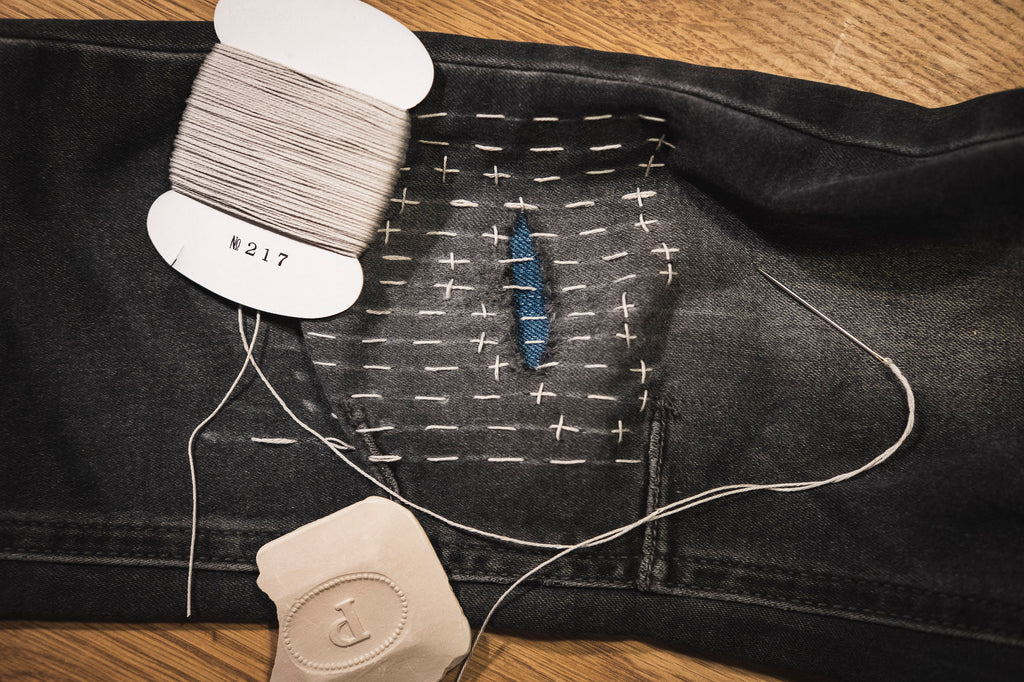Everybody with children can probably relate with worn out trouser knees! For us it started with intense crawling at eight months.
Then there was the learning to walk and toppling over phase. Afterwards came the playing roughly and sitting on the knees playing phase. If that wasn't enough, all of my own jeans started to fall apart from hours sitting on the floor playing with my children! It felt that we where constantly buying new trousers.

I really like sewing and thought it would be easy to stitch the holes so that the trousers and leggings could be worn a bit longer. The problem was that the fabric was so worn out, the stitches just fell out. I tried putting patches on, which at times worked well but could be rather fiddly to attach on small and skinny kids leggings.
Then I came across the Japanese method Sashiko. It looked so beautiful and it is very meditative to see repeated patterns being sewn. There is also a lot of different patterns, both geometrical and natural, giving the mended pieces a personal and unique look.

Sashiko a traditional Japanese embroidery method developed by poor workers to preserve their fabrics. Worn out pieces were stitched together with cloth to make them stronger and more durable and could be passed down through generations. This was during the time when fabrics where hand-made and where too precious to waste. A lot has, of course, become better over time, but I like to embrace this non-waste philosophy and how we can see possibilities instead of waste. Sashiko can of course be used in all sorts of mending, not only knees! It can also be used as repetitions on a piece of fabric or garment which is commonly known as Boro.

It took some time to get the appropriate equipment and understand how to sew these beautiful patterns, but after a bit of work, I really enjoy sitting and mending our trousers. I would be lying to say I master the art of Sashiko. It's not as easy as it looks and I would probably refer my mending technique as Japanese inspired visible mending rather than Sashiko. It definitely gives character and makes the pieces more durable, elongating the years they can be used. A bonus is that it's up to your own creativity how the end-result will turn out. The patch can be on the inside or outside of the garment and you can stitch any pattern you wish! Have try yourself!

I had these mending techniques in mind when designing the Beetles tregging. If you look carefully, there is a patch sewn on the inside at the knee. The fabric is of very high and pure quality and should withstand normal wear and tear. Sometimes accidents happen and your child gets stuck somewhere, fall hard on rocks or gravel. In that case, there is a second layer of fabric ready to use for visible stitch mending!

A few tips I've learnt so far:
- Use sashiko thread when mending visibly. Embroidery thread is too thick for my taste.
- Embroidery needles can be used, but the original Sashiko needles are sharper and sturdier, which makes the process easier.
- Start off with simple patterns such as straight lines. It's better to start simple and actually mend your clothes than to overcomplicate things and give up. The better you get, the more traditional you can make the embroidery.
- Use patches from similar type of fabric as the garment you wish to mend. Don't put a non-stretch canvas on leggings or vice-versa.
Take care,
Hannah
xxx


